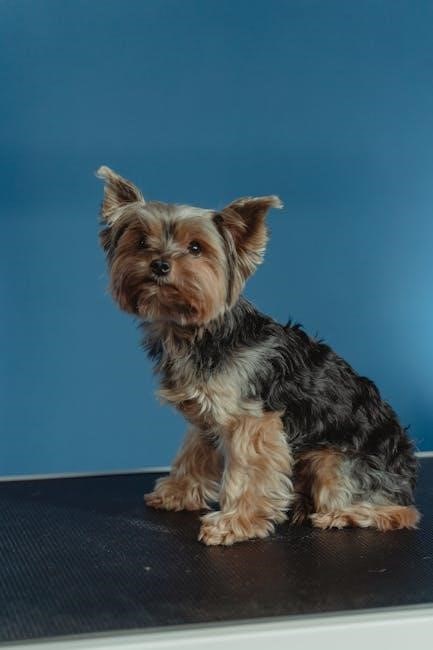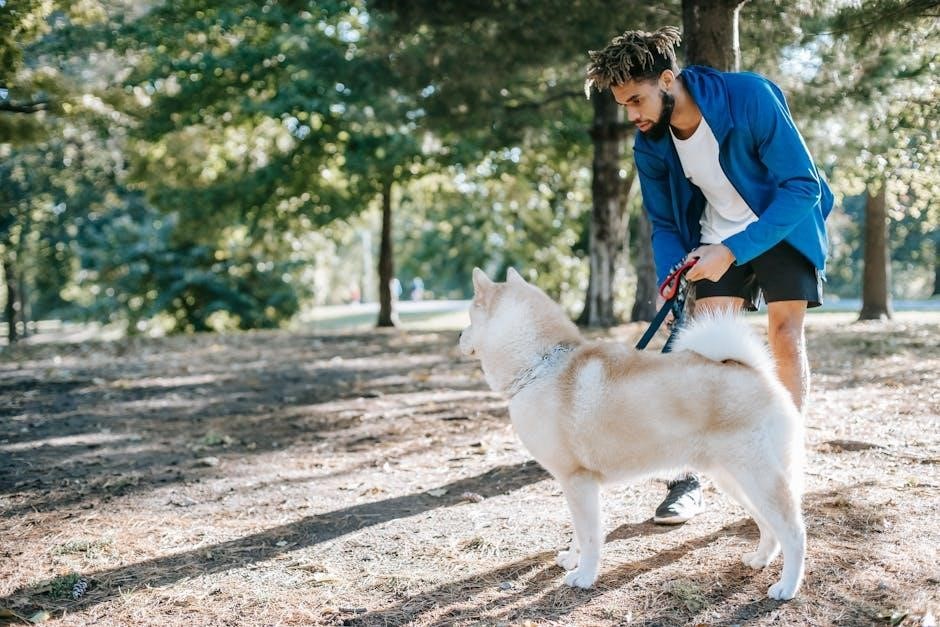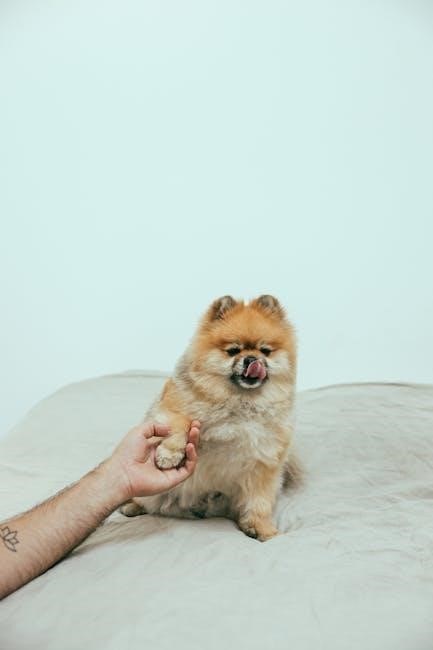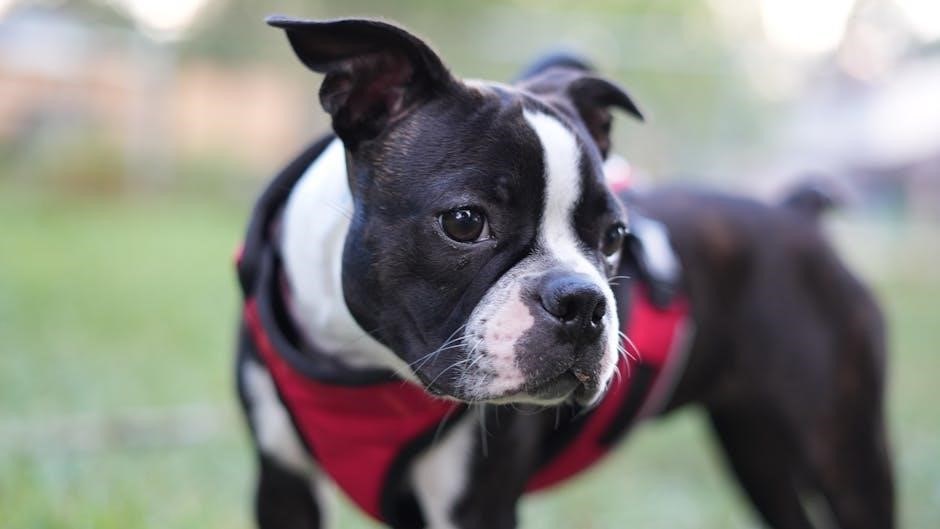Puppy Training Schedule PDF: A Comprehensive Guide
Bringing a puppy home is exciting! A structured training schedule is essential for success. This comprehensive guide offers a downloadable PDF to help you establish routines for potty training, crate training, feeding, and sleep.
Welcoming a new puppy into your home is a joyous occasion, filled with playful moments and the promise of a lifelong bond. However, raising a well-behaved and happy dog requires dedication and, most importantly, a structured approach to training. This is where a puppy training schedule comes in.
A puppy training schedule is a comprehensive plan that outlines the various aspects of your puppy’s daily routine, including potty breaks, feeding times, crate training sessions, socialization opportunities, and playtime; Think of it as a roadmap guiding you through the crucial early months of your puppy’s life, ensuring consistency and clarity in your training efforts.
Implementing a well-designed training schedule is not just about teaching your puppy basic commands; it’s about building a strong foundation of trust and understanding between you and your furry friend. It provides your puppy with a sense of security and predictability, making them feel more confident and relaxed in their new environment.
Benefits of a Structured Training Schedule
A structured puppy training schedule offers a multitude of benefits, paving the way for a well-adjusted and happy canine companion. Consistency is key to successful training, and a schedule ensures that your puppy receives regular and predictable training sessions, leading to faster learning and better retention. It helps establish clear expectations, reducing confusion and anxiety for your puppy.
Housebreaking becomes significantly easier with a consistent potty break schedule. Scheduled feeding times contribute to digestive health and make potty breaks more predictable; Crate training progresses smoothly when integrated into a daily routine, providing your puppy with a safe and secure den.
Beyond the practical aspects, a structured schedule strengthens the bond between you and your puppy. Through consistent interaction and positive reinforcement, you build trust and create a positive association with training. This leads to a more confident, well-behaved, and enjoyable companion.
Essential Elements of a Puppy Training Schedule
A well-rounded puppy training schedule incorporates several key elements to ensure comprehensive development. Potty training is paramount, requiring frequent and scheduled potty breaks, especially after waking up, eating, and playing. Crate training should be introduced gradually, creating a positive association with the crate as a safe space.
Feeding times should be consistent, utilizing your puppy’s food as a valuable training tool. Playtime is crucial for socialization and bonding, incorporating both structured training sessions and informal sniff-and-stroll sessions. Nap times are essential for rest and rejuvenation, preventing overstimulation and promoting learning.
Socialization plays a vital role, exposing your puppy to various sights, sounds, people, and other animals in a controlled and positive manner. Training sessions should be short, positive, and rewarding, focusing on basic commands like “sit,” “stay,” and “come.” Remember that consistency, patience, and positive reinforcement are the cornerstones of successful puppy training.

Potty Training Schedule
House training requires a consistent potty schedule. Establish a routine with regular breaks. This section provides guidance on creating a successful potty training plan, preventing accidents, and teaching your puppy appropriate elimination habits.
Creating a Potty Training Routine
Establishing a potty-training routine is crucial for your puppy’s success. Begin by designating a specific potty spot in your yard and consistently taking your puppy there. Consistency is key; take your puppy out frequently, especially after waking up, after meals, and after playtime. Use positive reinforcement when your puppy eliminates outside, offering praise and a small treat immediately. This helps your puppy associate the desired behavior with a reward.
Supervise your puppy closely indoors, watching for signs they need to go, such as circling, squatting, or excessive sniffing. If you catch your puppy in the act of having an accident inside, gently interrupt them and immediately take them outside to their designated spot. Clean up any accidents thoroughly with a pet odor remover to eliminate lingering scents that might attract your puppy back to the same spot.
A structured routine minimizes accidents and fosters good habits. Remember to be patient and understanding, as accidents are a normal part of the learning process.
Potty Break Frequency and Timing
Determining the right potty break frequency is vital for successful house training. A general guideline is to take your puppy out every two to three hours, especially for young puppies. Puppies have small bladders and limited control, so frequent trips outside are essential to prevent accidents. Pay close attention to your puppy’s behavior, as individual needs can vary.
Timing potty breaks strategically is also important. Take your puppy out first thing in the morning, immediately after waking up from naps, after meals, after playtime, and right before bedtime. These are common times when puppies need to relieve themselves. Establish a consistent schedule to help regulate your puppy’s system and create a predictable routine.
As your puppy grows older and gains more bladder control, you can gradually increase the intervals between potty breaks. However, always be mindful of your puppy’s needs and adjust the schedule accordingly. Consistency and attentiveness are key to successful potty training.
Dealing with Accidents
Accidents are an inevitable part of potty training. It’s crucial to remember that your puppy isn’t being intentionally disobedient; they are simply learning. When an accident happens, avoid scolding or punishing your puppy, as this can create fear and anxiety, making them less likely to eliminate in front of you.
Instead, clean up the accident thoroughly using an enzymatic cleaner designed to eliminate pet odors. This will prevent your puppy from being attracted to the same spot again. If you catch your puppy in the act of eliminating indoors, calmly interrupt them by saying “Uh-oh!” or making a noise to get their attention.
Immediately take your puppy outside to their designated potty spot. If they finish eliminating outside, praise them enthusiastically and offer a treat. This reinforces the desired behavior. Analyze the circumstances surrounding the accident to identify potential triggers or areas for improvement in your potty training schedule. Remember that patience and consistency are key to overcoming accidents and achieving success.

Crate Training Schedule
Crate training provides puppies with a secure den. A gradual introduction is key to success. A structured schedule helps puppies associate the crate with positive experiences, making it a safe and comfortable space.
Introducing the Crate
Introducing the crate should be a positive experience for your puppy. Never force your puppy into the crate, as this can create negative associations and anxiety. Instead, make the crate inviting and comfortable. Start by placing the crate in a common area of your home where your puppy spends time. Leave the door open and encourage your puppy to explore it at their own pace.
To entice your puppy inside, toss treats or toys into the crate. When your puppy enters the crate to retrieve the treat or toy, praise them enthusiastically. Gradually, your puppy will begin to associate the crate with positive things. You can also feed your puppy meals inside the crate to further reinforce this positive association. Make sure to supervise your puppy during these initial introductions, and keep the sessions short and sweet. The goal is to create a safe and happy space.
Feeding and Crate Training
Combining feeding with crate training can create a positive association. By feeding your puppy inside the crate, you are essentially rewarding them for being in that space. Place your puppy’s food bowl inside the crate, ensuring it is far enough in that they must fully enter to eat. As your puppy eats, praise them calmly and reassuringly.
Once your puppy is comfortable eating in the crate with the door open, you can begin closing the door while they eat. Start with very short intervals, gradually increasing the time the door is closed. The aim is for your puppy to associate the crate with positive experiences. Always supervise your puppy during these sessions and never leave them unattended for extended periods while they are still getting used to the crate.
This method helps establish a routine and makes the crate a desirable place.
Gradual Increase of Crate Time
Once your puppy is comfortable eating in the crate, gradually increase the amount of time they spend inside. Start with short periods, such as 10-15 minutes, and slowly extend the duration. During these times, provide your puppy with a safe chew toy to keep them occupied and entertained. This helps them associate the crate with positive experiences and prevents boredom.
It’s essential to monitor your puppy’s behavior during these sessions. If they show signs of distress, such as whining or barking, reduce the crate time and try again later. The key is to make the process gradual and positive, ensuring your puppy feels safe and secure in their crate.
Consistency is important. Incorporate crate time into your daily routine, even when you are at home. This will help your puppy become accustomed to the crate and view it as a comfortable and safe space. Remember, patience and positive reinforcement are crucial for successful crate training.

Feeding Schedule
A consistent feeding schedule is crucial for your puppy’s health and training. Regular meal times aid digestion, help with potty training, and provide opportunities for positive reinforcement using food as a reward.
Establishing Regular Meal Times
Establishing regular meal times is paramount for your puppy’s well-being and training progress. Consistency in feeding not only aids in digestion and nutrient absorption but also plays a significant role in housebreaking. A predictable feeding schedule leads to a more predictable potty schedule, making it easier to anticipate your puppy’s needs and prevent accidents.
When creating a feeding schedule, consider your puppy’s age and breed, as these factors influence their dietary requirements. Puppies generally need to eat more frequently than adult dogs, typically three to four times a day. Consult with your veterinarian to determine the appropriate amount of food and the ideal feeding frequency for your puppy.
Choose high-quality puppy food that is specifically formulated to meet the nutritional demands of growing dogs. Measure out the food according to the manufacturer’s instructions and avoid free-feeding, which can lead to overeating and obesity. Stick to the scheduled meal times, even if your puppy doesn’t seem hungry initially; A consistent routine will help them learn when to expect food and regulate their appetite accordingly.
Using Food for Training Rewards
Food can be an incredibly powerful tool in puppy training. Utilizing your puppy’s daily food allowance as rewards can motivate them and make training sessions more effective. Instead of simply placing food in a bowl, use small pieces of kibble or training treats to reinforce desired behaviors.
When starting, use high-value treats that your puppy finds irresistible. These could be small pieces of cooked chicken, cheese, or commercially available puppy treats. As your puppy progresses, you can gradually transition to using their regular kibble for some training sessions.
Keep training sessions short and positive, focusing on one or two commands at a time. Reward your puppy immediately after they perform the desired behavior, using a clear and enthusiastic marker word like “yes” or “good.” Deliver the treat promptly and follow it with praise and affection.
Avoid overfeeding by adjusting your puppy’s meal portions to account for the treats used during training. Remember, the goal is to use food as a motivator, not to replace proper nutrition. By incorporating food rewards into your training routine, you can build a strong bond with your puppy and accelerate their learning process.

Sleep Schedule and Naps
Puppies require significantly more sleep than adult dogs, playing a crucial role in their physical and mental development. Establishing a consistent sleep schedule, including regular naps, is essential for a well-adjusted and happy puppy. A structured sleep routine helps regulate their energy levels, prevents overstimulation, and promotes better learning during training sessions.
Create a designated sleep area for your puppy, such as a crate or a comfortable bed in a quiet corner. This space should be associated with relaxation and security. During the day, ensure your puppy has plenty of opportunities for naps, especially after periods of activity or training.
Young puppies typically need 16-20 hours of sleep per day. Observe your puppy for signs of tiredness, such as yawning, becoming less responsive, or seeking a quiet place to lie down. When you notice these cues, gently guide them to their sleep area and encourage them to rest.
Stick to a consistent bedtime routine to signal that it’s time to sleep. This could include a calming activity like a gentle massage or quiet playtime. Avoid stimulating activities close to bedtime. A well-rested puppy is more receptive to training and less prone to behavioral issues.
